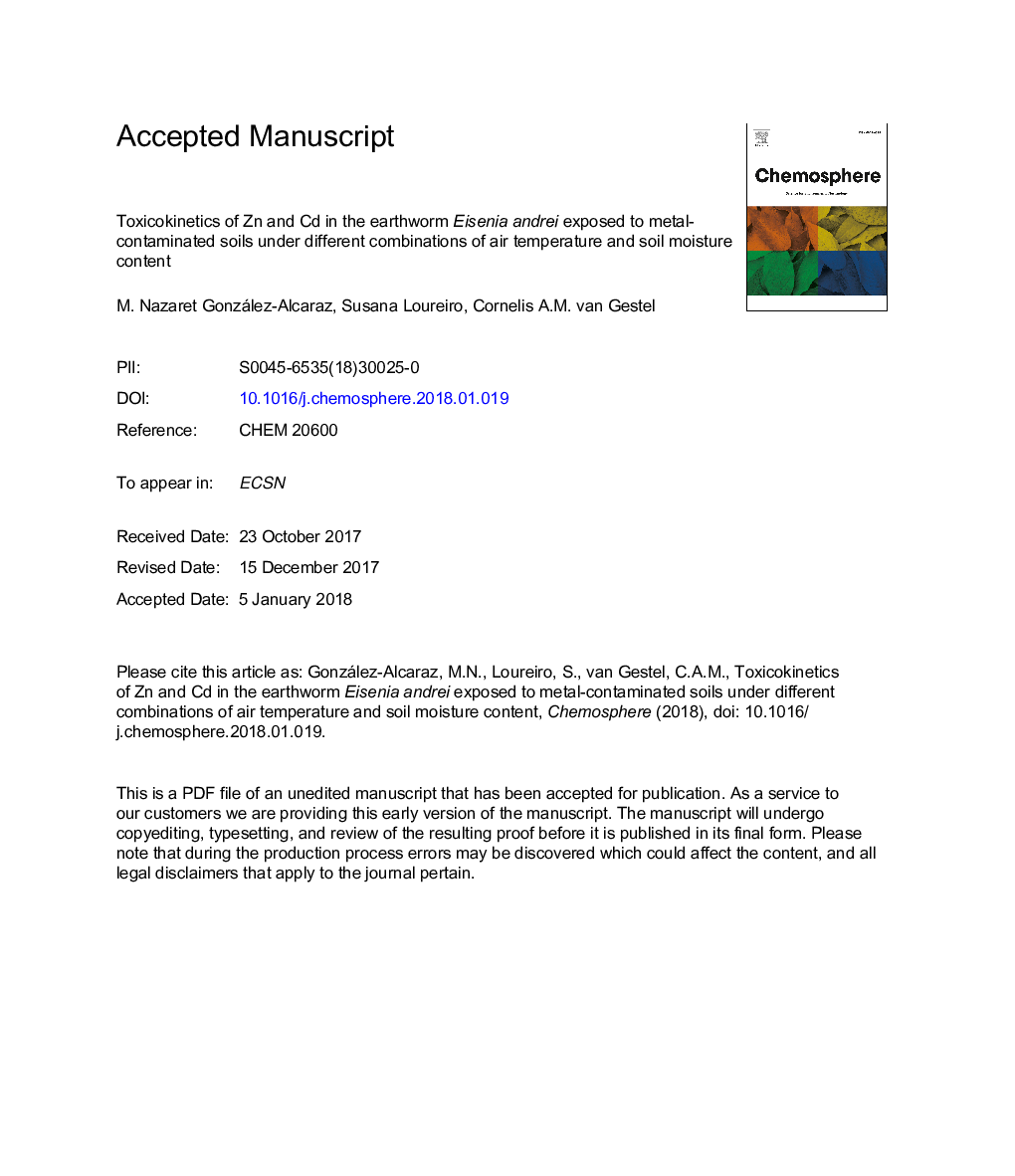| Article ID | Journal | Published Year | Pages | File Type |
|---|---|---|---|---|
| 8851991 | Chemosphere | 2018 | 34 Pages |
Abstract
This study evaluated how different combinations of air temperature (20â¯Â°C and 25â¯Â°C) and soil moisture content (50% and 30% of the soil water holding capacity, WHC), reflecting realistic climate change scenarios, affect the bioaccumulation kinetics of Zn and Cd in the earthworm Eisenia andrei. Earthworms were exposed for 21â¯d to two metal-contaminated soils (uptake phase), followed by 21â¯d incubation in non-contaminated soil (elimination phase). Body Zn and Cd concentrations were checked in time and metal uptake (k1) and elimination (k2) rate constants determined; metal bioaccumulation factor (BAF) was calculated as k1/k2. Earthworms showed extremely fast uptake and elimination of Zn, regardless of the exposure level. Climate conditions had no major impacts on the bioaccumulation kinetics of Zn, although a tendency towards lower k1 and k2 values was observed at 25 °C + 30% WHC. Earthworm Cd concentrations gradually increased with time upon exposure to metal-contaminated soils, especially at 50% WHC, and remained constant or slowly decreased following transfer to non-contaminated soil. Different combinations of air temperature and soil moisture content changed the bioaccumulation kinetics of Cd, leading to higher k1 and k2 values for earthworms incubated at 25 °C + 50% WHC and slower Cd kinetics at 25 °C + 30% WHC. This resulted in greater BAFs for Cd at warmer and drier environments which could imply higher toxicity risks but also of transfer of Cd within the food chain under the current global warming perspective.
Related Topics
Life Sciences
Environmental Science
Environmental Chemistry
Authors
M. Nazaret González-Alcaraz, Susana Loureiro, Cornelis A.M. van Gestel,
